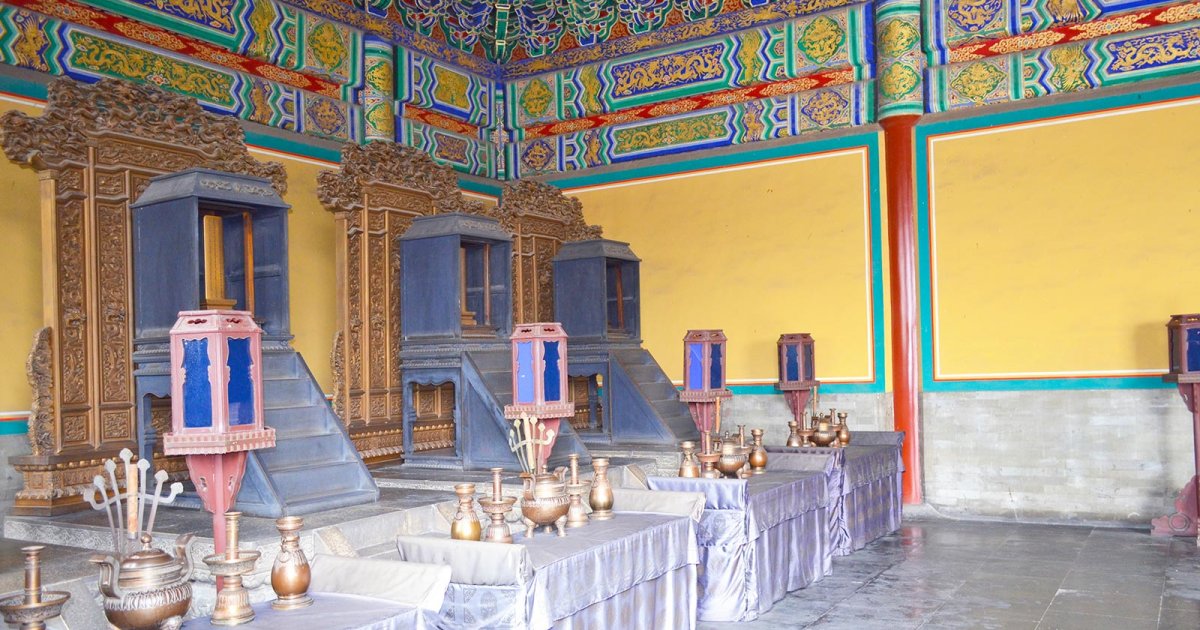TEMPLE OF HEAVEN, Hall Of Prayer For Good Harvests Part Ii
 Language: English / USA
Language: English / USA
The two pavilions you see on the two sides of the Hall of Prayer were once used as the storeroom of the divine tablets. The one on the left is now arranged as a Worshipping Heaven Ceremony Exhibition Hall, featuring objects used for sacrifices and illustrating the entire procedure followed by the emperor for worshipping Heaven, with a model of Emperor Qianlong engaged in the most important ritual of the Qing dynasty. The room on the right, on the other hand, has been turned into a hall for music and dance, where you can see ancient instruments such as bells and carillons for making Shao music. Words, pictures, light boxes, models and sounds come together to reconstruct the music and the choreography of the various ceremonies that were once held in the temple.
Another important building in the complex is the Imperial Hall of Heaven, which you’ll find next to the Hall of Prayer, which is connected by three glass doors. This was where the divine tablets were consecrated. The gate on the side is known as the Guxi Gate, meaning 70 years. Note the glazed blue roof of the hall. Under the eaves is a tablet written by Emperor Jiajing in his own hand, presenting the "Imperial Hall of Heaven".
There are a number of shrines inside shaped like little houses, which contain the so-called God’s tablets. On the first and the fifth days of each lunar month, officials used to dust them and then burn incense.
At one side of the altar, you can see the Seventy-Two Altars Corridor, with a long portico, a marvelous decorated ceiling and a green tiled roof. It is five meters wide and 350 meters long, and contains 72 small rooms, each with a small altar. It is connected to the Divine Kitchens behind it.
On the eve of the sacrificial ceremonies, the corridor was lit with lanterns, and the offerings, including jade, silk, cereals and fruit, were carried along the corridor in a grand procession.
An interesting fact: at the end of the corridor are the Seven Star Stones. There are actually eight of them: Emperor Jiajing had seven large boulders carved to resemble the peaks of the Taishan mountains, to symbolize the unity of China. When Manchuria became part of China, the Qianlong Emperor had an eighth stone added.



